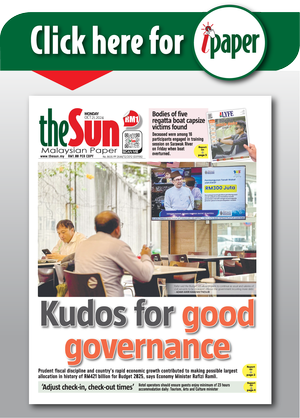KUALA LUMPUR: Malaysia’s property overhang shows signs of improvement, with the total number of unsold completed or overhang dwelling units decreasing in the third quarter of 2024 (Q3’24), said property consultant Rahim & Co’s research director, Sulaiman Saheh.
He said this encompasses both conventional residential units as well as serviced apartment and small office, home office units.
He said, however, challenges persist as affordability and demand gaps continue to pose significant barriers in addressing the overhang issue.
“The Malaysian property market saw a reduction in the number of overhang dwelling units in the third quarter of 2024, indicating some recovery in the sector. The total overhang dwelling units dropped by 10.8% to 44,057 units as of the end of the quarter, compared to the previous period (49,364). Despite this, we noticed that the reduction in overhang does not mean an overall market recovery, as the underlying issues continue to affect property sales,” he told reporters at Rahim & Co’s presentation on property market trends on Tuesday.
Sulaiman noted that affordability remains a key challenge, with demand concentrated in the affordable and mid-range property sectors.
“While developers have shifted their focus to more affordable units, the demand is still not meeting the supply, particularly in certain locations and segments. Property prices have continued to rise, particularly in urban areas, creating a widening gap between what buyers can afford and what is being offered in the market,” he said.
The shortage of skilled workers, rising material costs and an overall lack of investor confidence also continue to hinder the sector’s full recovery, Sulaiman said.
“While government policies to address the property overhang are on track, much more needs to be done to balance supply and demand, particularly in the affordable housing sector,” he added.
Another factor affecting the market, Sulaiman said, is the mismatch between type of properties being developed and actual buyer preferences.
“Many developers have focused on high-end projects, leading to an oversupply in the luxury segment, while demand remains strongest for properties priced below RM500,000. This imbalance has contributed to the persistent overhang issue, despite the recent improvement in numbers,” Sulaiman said.
Furthermore, he noted that income disparity remains a major factor contributing to Malaysia’s property overhang, as wage growth has not kept pace with rising property prices.
“While housing prices, especially in urban centres, have surged over the years, many middle- and lower-income households continue to struggle with stagnant incomes and high living costs. This gap has made homeownership increasingly difficult for a significant portion of the population, leading to weaker demand in the market.
“Without policies that address income inequality such as higher minimum wages, better job opportunities, and more accessible housing finance, the affordability crisis is likely to persist, further hindering the property sector’s recovery,” he added.
In response to these challenges, Sulaiman said, some developers have begun introducing flexible financing schemes and rent-to-own options to attract first-time home buyers.
“These initiatives aim to lower the entry barriers for potential buyers who may struggle with hefty down payments or strict mortgage requirements. However, such schemes alone may not be sufficient to resolve the affordability crisis without broader policy interventions.”
Looking ahead, Sulaiman said Malaysia’s property market is expected to continue growing in 2025, but at a more moderate pace compared to the strong performance in 2024.
“Last year saw a 6.2% increase in transaction value, but we have anticipated a 5% growth this year, depending on Q4’24 performance. As of the first nine months, 311,211 transactions had been recorded, and if Q4’24 achieves about 120,000 transactions more, total activity could reach levels comparable to the market peak of 2011-2012 (430,403).
“All property sectors including residential, commercial, agriculture, industrial and development land saw increased transactions nationwide, signaling broad-based market activity. However, rising costs, stagnant wages, and external economic uncertainties, including global political factors and inflation, may slow the momentum. While demand remains strong, affordability concerns and higher costs could impact both property ownership and profitability moving forward,” Sulaiman said.









